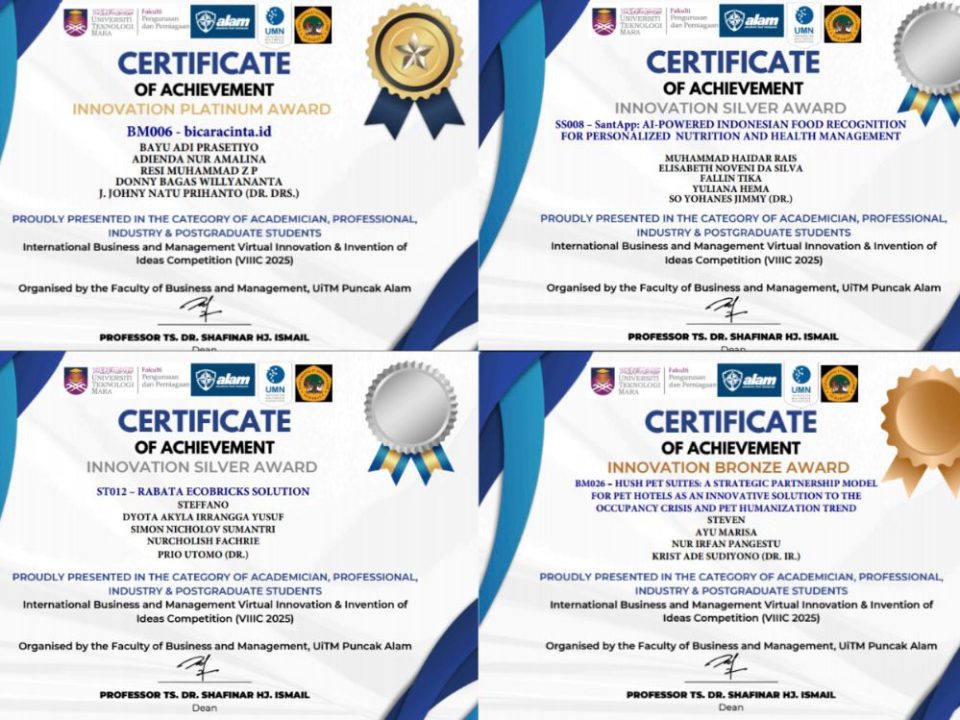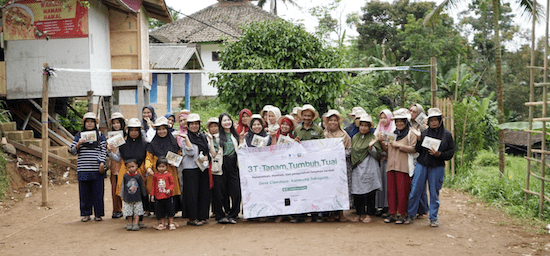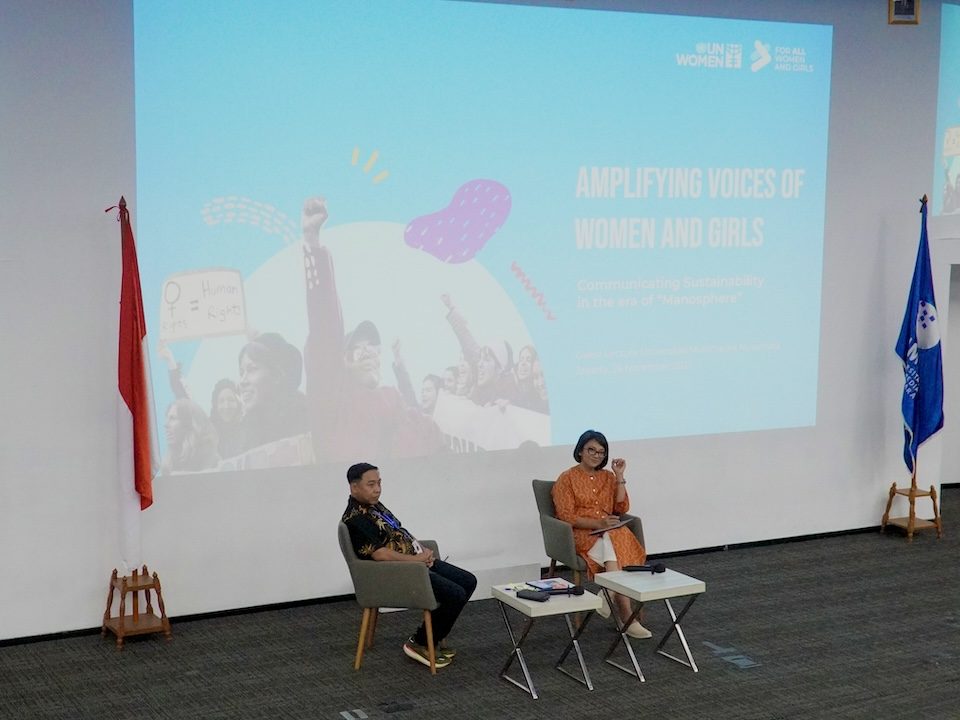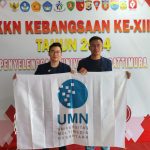
Stories of 2 UMN Students Participating in KKN Kebangsaan 2024: Teaching Business Economics-Multimedia Training
August 13, 2024
How to Unlock Your Dream Career in Data Without an IT Background
August 16, 2024Universitas Multimedia Nusantara (UMN) has thoughtfully designed its Green Area, which covers approximately 57% of the total campus, to embody sustainability and efficient water use. This expansive space is home to a diverse range of native and drought-tolerant plant species, carefully selected to thrive in the local climate with minimal irrigation.
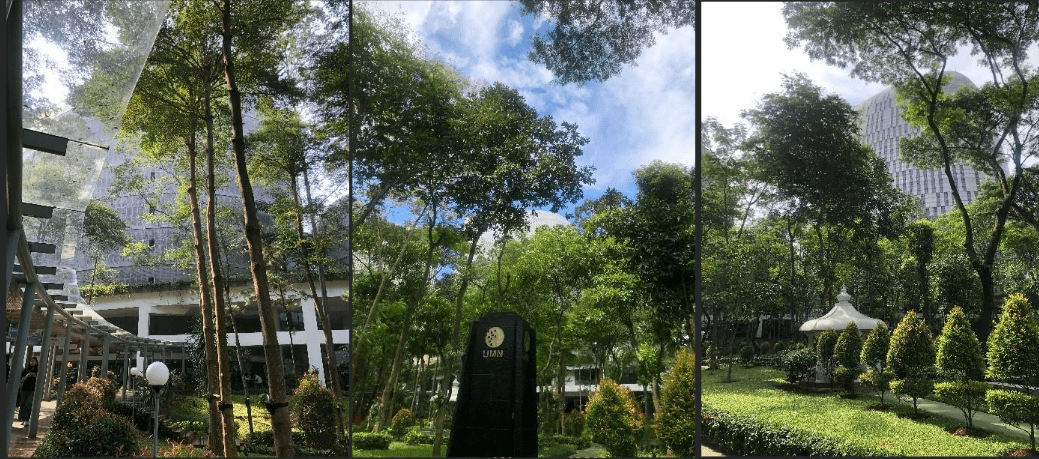
The landscape features resilient trees well adapted to tropical conditions, including Eucalyptus, Ketapang Kencana (Terminalia mantaly), Pulai (Alstonia scholaris), Pinus, Trembesi (Samanea saman), and Bintaro (Cerbera manghas). These species require less water and provide ample shade, supporting long-term ecological stability. In addition, UMN’s Green Area includes a variety of majestic species such as:
- American Mahogany
- African Tulip
- Slash Pine
- Indian-Almond (Terminalia catappa)
- Teak (Tectona grandis)
- Monkey Pod (Samanea saman)
- Rainbow Eucalyptus
- Gebang Palm
- Sheoaks (Casuarina equisetifolia)
Complementing these are drought-tolerant plants specifically known for their ability to thrive with minimal water, including:
- Peruvian Apple Cactus
- Snake Plant (Sansevieria)
- Song of India (Dracaena reflexa)
A key element of UMN’s landscaping is its commitment to native Indonesian species such as Rainbow Eucalyptus, Indian-Almond, Teak, Sheoaks, Gebang Palm, and Pulai. These natives not only conserve water but also promote local biodiversity and honor Indonesia’s natural heritage.

Plants around campus parks and gardens (Doc. UMN)
Supporting this balanced approach, UMN uses a sustainable irrigation system featuring water-saving sprinklers. Importantly, all irrigation water is sourced from treated and recycled water processed through the campus’s advanced wastewater treatment facilities.
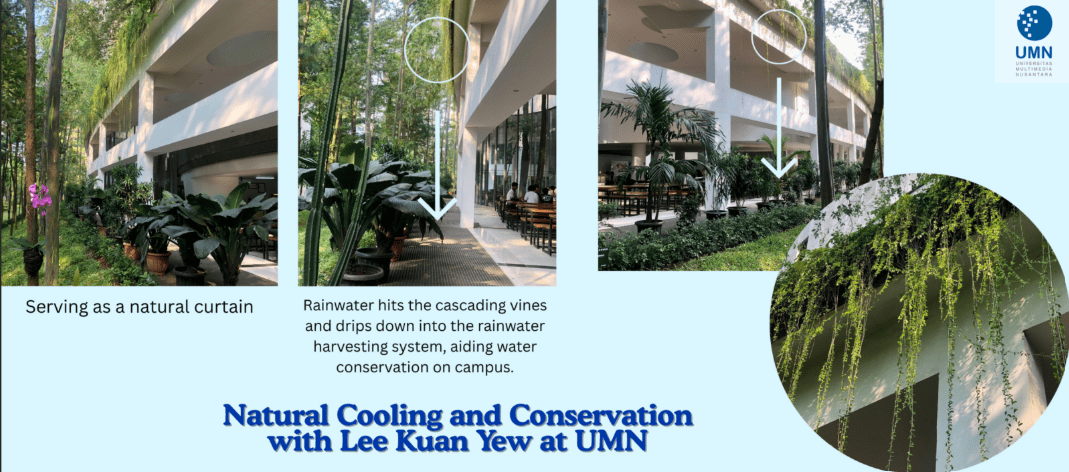
(Doc.UMN)
The use of drought-tolerant landscaping goes beyond water conservation; it’s integrated with functional design and urban aesthetics. One example is the strategic placement of Lee Kuan Yew vines along the edge of the third-floor garden balcony. These cascading green curtains not only provide natural shade and soften the building’s facade but also play a vital role in controlling rainwater. When it rains, the dense foliage breaks the fall of water, preventing it from splashing directly into the canteen area below. Instead, the water drips gently down and is directed into the perforated metal inlets connected to the campus’s rainwater harvesting system. This smart synergy between landscaping and infrastructure helps manage runoff, reduces splash-related disturbances, and supports sustainable water reuse—proving that greenery at UMN is more than just decoration; it’s an integral part of campus resilience and environmental stewardship.
By combining drought-tolerant species, native plants, and recycled water use, UMN’s Green Area represents an integrated, sustainable approach to campus landscaping. This initiative aligns with Clean Water and Sanitation and reflects UMN’s commitment to environmental stewardship and responsible resource management.
Kuliah di Jakarta untuk jurusan program studi Informatika| Sistem Informasi | Teknik Komputer | Teknik Elektro | Teknik Fisika | Akuntansi | Manajemen| Komunikasi Strategis | Jurnalistik | Desain Komunikasi Visual | Film dan Animasi | Arsitektur | D3 Perhotelan , di Universitas Multimedia Nusantara.

